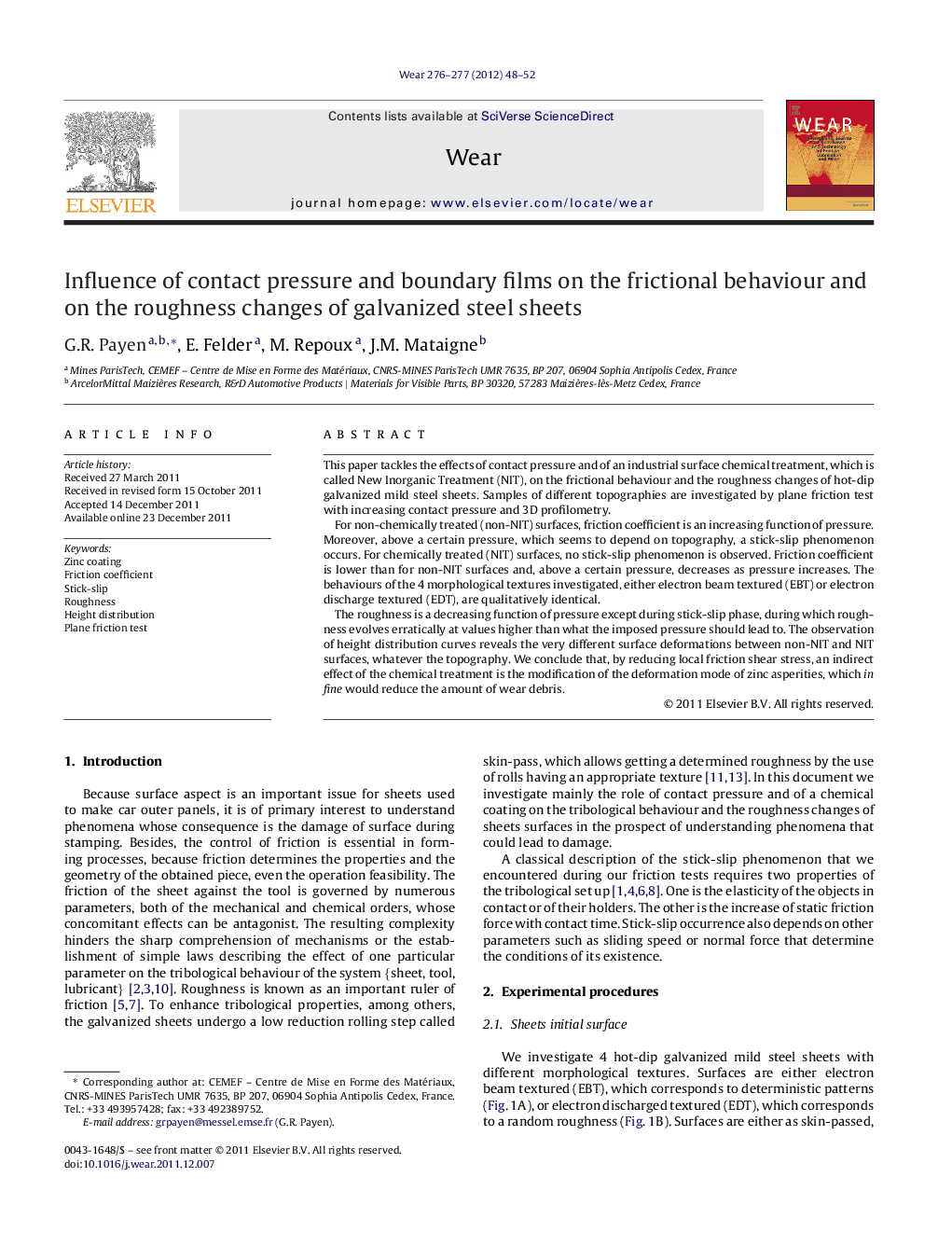| کد مقاله | کد نشریه | سال انتشار | مقاله انگلیسی | نسخه تمام متن |
|---|---|---|---|---|
| 617979 | 1455016 | 2012 | 5 صفحه PDF | دانلود رایگان |

This paper tackles the effects of contact pressure and of an industrial surface chemical treatment, which is called New Inorganic Treatment (NIT), on the frictional behaviour and the roughness changes of hot-dip galvanized mild steel sheets. Samples of different topographies are investigated by plane friction test with increasing contact pressure and 3D profilometry.For non-chemically treated (non-NIT) surfaces, friction coefficient is an increasing function of pressure. Moreover, above a certain pressure, which seems to depend on topography, a stick-slip phenomenon occurs. For chemically treated (NIT) surfaces, no stick-slip phenomenon is observed. Friction coefficient is lower than for non-NIT surfaces and, above a certain pressure, decreases as pressure increases. The behaviours of the 4 morphological textures investigated, either electron beam textured (EBT) or electron discharge textured (EDT), are qualitatively identical.The roughness is a decreasing function of pressure except during stick-slip phase, during which roughness evolves erratically at values higher than what the imposed pressure should lead to. The observation of height distribution curves reveals the very different surface deformations between non-NIT and NIT surfaces, whatever the topography. We conclude that, by reducing local friction shear stress, an indirect effect of the chemical treatment is the modification of the deformation mode of zinc asperities, which in fine would reduce the amount of wear debris.
► Textured and chemically treated galvanized steel sheets are investigated.
► Whatever the topography, chemically coated surfaces show reduced friction coefficient.
► Roughness evolves erratically during stick-slip, otherwise it decreases as pressure increases.
► Asperities deformations are very different between coated and uncoated surfaces.
► The low local shearing due to coating reduces wear debris from asperities deformation.
Journal: Wear - Volumes 276–277, 15 February 2012, Pages 48–52